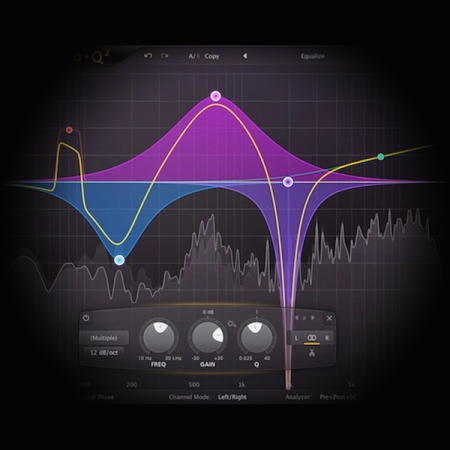Using EQ to add presence and dynamics to a Piano sound
Finding it hard to nail that piano sound? Let me show you how by using equalisation to enrich and liven a staid piano sound.
Dynamic Processors
Purchase to view this tutorial
By purchasing this tutorial, you'll get immediate access - your purchase helps create new and exciting content and this site survive!
$1.95Add to basket
Using EQ to add presence and dynamics to a Piano sound is an essential video tutorial explaining how to first clean and optimise a piano sound and then to add presence and dynamic motion using a dynamic equaliser.
Second only to the human voice pianos are rich in harmonics and ooze acres of dynamic motion. Recording a piano can be both challenging and rewarding as the process is both intimate and logical. However, once the tracked sound is in your DAW the real work begins. Of course, it goes without saying that if you nail a great piano recording then most of the mix processing work is done for you but what if you don’t have a gazillion top quality mics, Saudi Oil money preamps, and an Abbey Rd studio to record in? Well, this is where mix processing takes on a whole new meaning and getting the right process in place to make your piano recordings shine through the mix can be hit and miss. Let me show you how a single dynamic processor can work wonders on any sound and in particular sounds that are rich in harmonics.
The first step in achieving a great piano sound is to use corrective equalisation to remove redundant and nasty frequencies.
Redundant Frequencies
One of the most important processes in music production is that of using corrective equalisation to remove redundant and problematic frequencies from audio prior to mixing. We refer to this process as cleaning.
Filter circuits (such as low-pass filters, high-pass filters, band-pass filters, and band-reject filters) shape the frequency content of signals by allowing only certain frequencies to pass through. We are going to look at a filter circuit that uses both a high pass and low pass filters. The two together form what we in the industry term as a band-pass filter.
The type of equaliser filter I use for all cleaning tasks is a band-pass filter.
So, why band-pass? Because what we are trying to achieve is to remove low-end frequencies that are not needed and high-end frequencies that are also not needed (which many seem to ignore). These are called redundant frequencies. The frequencies we keep are the frequencies we are going to process.
Now that we have removed all redundant frequencies we can concentrate on colouring the ‘good’ frequencies that are left but first, we need to locate these frequencies which we term as target frequencies.
Target Frequency
The hardest part of using equalisation is to find the exact frequency you want to process. There are processes in place that make this task easy to execute and one excellent trick is to use the band solo feature on the equaliser. Some well designed EQs will afford the user the ability to solo any eq node/band so that the specified frequency range can be heard in isolation. This is an extremely helpful aid and a technique I always use when it comes to using eq.
Now that we have removed all the frequencies we don’t need we can start to apply dynamic processing and the best tool for this job is a dynamic equaliser.
Dynamic eq
A dynamic equaliser applies the gain change directly to the gain parameters of a multiband parametric equaliser. As with most dynamics processors, the threshold determines at which point gain changes take place. You have control over the bandwidth denoted by the Q value and, much like a compressor, the response is controlled with attack and release functions.
In Using EQ to add presence and dynamics to a Piano sound video, I explain what a dynamic equaliser is and how it works. I show you how to use band-pass equalisation to remove redundant and nasty frequencies. I show you how to find target frequencies to work on and explain the process from start to finish. I explain the differences in using EQ cuts and boosts and when one might be preferred over the other. I show you some very cool techniques in how to add presence and dynamic motion to a piano sound.
The plugin used in this video:
Topics covered in this video are:
- Dynamic EQ
- Threshold
- Peak versus Shelf
- Q and Bandwidth
- Resonance and Broadband
- Opposing Processing
- Boost versus Cut
- Tips and Tricks
If this tutorial was of help then maybe these will also be of benefit:
Active, Passive, Graphic, Parametric, Fixed and Peaking Eqs
Eq Filters and Slopes/Responses
What is an equaliser and how does it work
Band Pass Equalisation – cleaning audio channels
Dynamic EQ – what is it and how do you use it
EQ Uncovered – (second edition)
Linear Phase Eq versus Minimum Phase Eq

